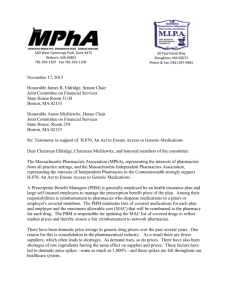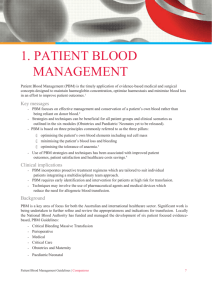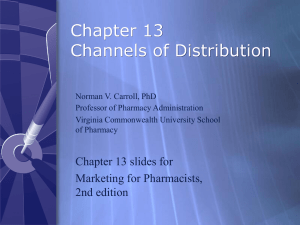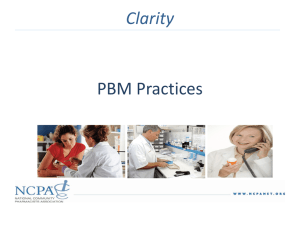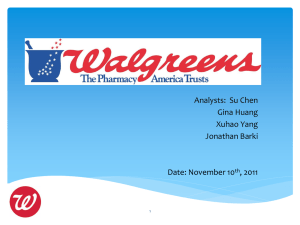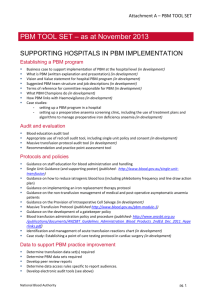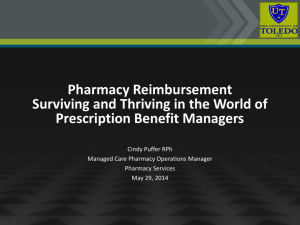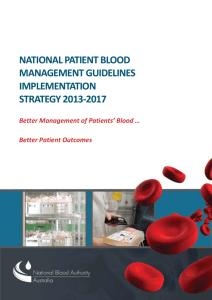Senate Bill _____ (Overbey, Haile, House Bill 1554 (Shepard, Mike
advertisement
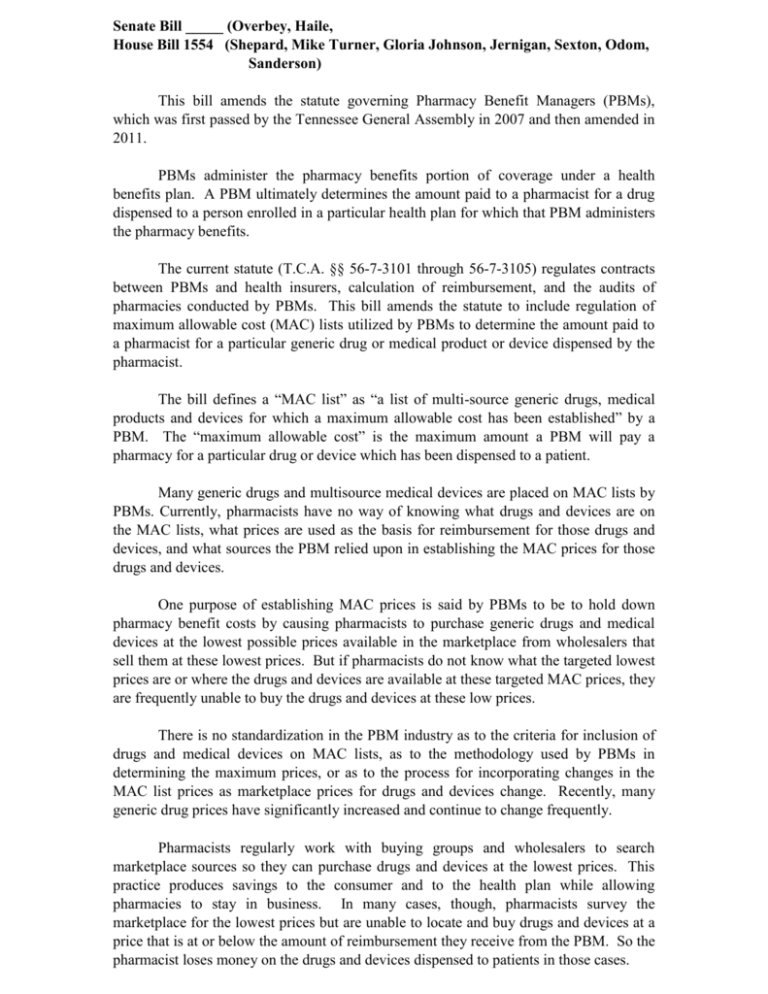
Senate Bill _____ (Overbey, Haile, House Bill 1554 (Shepard, Mike Turner, Gloria Johnson, Jernigan, Sexton, Odom, Sanderson) This bill amends the statute governing Pharmacy Benefit Managers (PBMs), which was first passed by the Tennessee General Assembly in 2007 and then amended in 2011. PBMs administer the pharmacy benefits portion of coverage under a health benefits plan. A PBM ultimately determines the amount paid to a pharmacist for a drug dispensed to a person enrolled in a particular health plan for which that PBM administers the pharmacy benefits. The current statute (T.C.A. §§ 56-7-3101 through 56-7-3105) regulates contracts between PBMs and health insurers, calculation of reimbursement, and the audits of pharmacies conducted by PBMs. This bill amends the statute to include regulation of maximum allowable cost (MAC) lists utilized by PBMs to determine the amount paid to a pharmacist for a particular generic drug or medical product or device dispensed by the pharmacist. The bill defines a “MAC list” as “a list of multi-source generic drugs, medical products and devices for which a maximum allowable cost has been established” by a PBM. The “maximum allowable cost” is the maximum amount a PBM will pay a pharmacy for a particular drug or device which has been dispensed to a patient. Many generic drugs and multisource medical devices are placed on MAC lists by PBMs. Currently, pharmacists have no way of knowing what drugs and devices are on the MAC lists, what prices are used as the basis for reimbursement for those drugs and devices, and what sources the PBM relied upon in establishing the MAC prices for those drugs and devices. One purpose of establishing MAC prices is said by PBMs to be to hold down pharmacy benefit costs by causing pharmacists to purchase generic drugs and medical devices at the lowest possible prices available in the marketplace from wholesalers that sell them at these lowest prices. But if pharmacists do not know what the targeted lowest prices are or where the drugs and devices are available at these targeted MAC prices, they are frequently unable to buy the drugs and devices at these low prices. There is no standardization in the PBM industry as to the criteria for inclusion of drugs and medical devices on MAC lists, as to the methodology used by PBMs in determining the maximum prices, or as to the process for incorporating changes in the MAC list prices as marketplace prices for drugs and devices change. Recently, many generic drug prices have significantly increased and continue to change frequently. Pharmacists regularly work with buying groups and wholesalers to search marketplace sources so they can purchase drugs and devices at the lowest prices. This practice produces savings to the consumer and to the health plan while allowing pharmacies to stay in business. In many cases, though, pharmacists survey the marketplace for the lowest prices but are unable to locate and buy drugs and devices at a price that is at or below the amount of reimbursement they receive from the PBM. So the pharmacist loses money on the drugs and devices dispensed to patients in those cases. The purpose of this bill is to ensure that the MAC pricing system is fair to both pharmacists and PBMs. The bill contains the following provisions: 1. Before a drug may be placed on a MAC list by a PBM, there must be at least 3 generically equivalent versions of that drug available for purchase by Tennessee pharmacies from national or regional wholesalers, and the drug must not be obsolete, temporarily unavailable, or on a drug shortage list. 2. If a drug which has been placed on the MAC list ceases to meet the above requirements, the drug must be taken off the MAC list within 3 business days after the PBM becomes aware that the drug no longer meets these requirements. 3. A PBM must provide to each pharmacy with which the PBM or health insurer has a contract: (a) Each MAC list used by the PBM, and (b) The methodology and sources used to determine the MAC prices for the drugs and devices on each MAC list. 4. Every PBM must update the MAC prices on each of its MAC lists on its secure website at the same time the PBM updates the prices on these lists for its own use. Every contracted pharmacist must have access to the updated MAC lists at all times on the PBM’s secure website, and the PBM must use the prices on the updated lists to calculate payments to pharmacies. 5. A PBM is prohibited from establishing any price on a MAC list in an amount which results in reimbursement to a pharmacy that is below the amount found in the source used by the PBM to set the price. 6. The pharmacist’s dispensing fee shall not be included by the PBM in the MAC price set by the PBM for a particular drug or device. 7. Each PBM must establish a clearly defined appeal process allowing a pharmacist to contest the placement of a particular drug or device on the MAC list or the establishment of a price for a particular drug or device in violation of this bill. The PBM must resolve the appeal within 7 calendar days of its receipt of the appeal and must state the reason for the denial of the pharmacist’s appeal if it is denied. 8. If the basis of a pharmacist’s appeal is determined to be valid, the MAC price for that drug or device shall be adjusted for the appealing pharmacy and all other similar situated pharmacies in that network, and the adjustment shall be effective from the date the appeal was filed. 9. A violation shall subject the violator to any of the penalties provided by current laws (T.C.A. § 56-2-305) enforced by the Department of Commerce and Insurance.

